Assessment of Microstructural Features of a Silchrome 1 Exhaust Valve of a Harley-Davidson WLA World War II Motorcycle
Abstract
1. Introduction
- Is the steel employed for the valve in 1942 close to the modern material standard [9]-grade one in terms of chemical composition?
- Is the original 1942 valve heat treatment in coherence with the steel modern material standard?
2. Valve Manufacturing
3. Materials and Methods
3.1. The Investigated Valve
3.2. Structural Observations
3.3. Chemical Composition Determination
3.4. Hardness Profile Test
3.5. Heat Treatment–Hardness Experiment
4. Results and Discussion
4.1. Macro and Micro Structure Observation
4.2. Chemical Analysis Determination
4.3. Valve Hardness Profile
4.4. Heat Treatment–Hardness Experiment
5. Conclusions
- Answer to the first question: The steel employed for the fabrication of the valve is Silchrome 1 steel in coherence with the X45CrSi9-3 steel modern material standard [9] but containing 0.3 wt% of molybdenum in the historical valve, which is not required by the ISO standard. As well, there is a slightly higher content of phosphorus and sulfur exceeding the standard limit, which can be connected with inclusions.
- The manufacturing process led to flow lines accompanied by inclusions which corresponds with the year of production of the part, and an inhomogeneous distribution of carbon and chromium was documented.
- Whether this valve head was produced by gather upset or electrical upset could not be determined and had been left to the readers’ assessment.
- Answer to the second question: The heat treatment–hardness experiment demonstrates that the original heat treatment is not in coherence with the steel modern DIN standard practice [24,25]. Most likely the tempering temperature was lower for the investigated valve in the surplus part, which contrasts with the service temperature indicated in the contemporary motorcycle mechanics handbook [42].
Author Contributions
Funding
Institutional Review Board Statement
Informed Consent Statement
Data Availability Statement
Acknowledgments
Conflicts of Interest
References
- Firmansyah, D.; Irawan, M.; Amrozi, M.; Maitra, M.; Rahman, T.; Widiastuti, N. A bibliometric analysis of motorcycle studies in Asia: From 1971 to 2022. IATSS Res. 2024, 48, 68–83. [Google Scholar] [CrossRef]
- Sun, Z.; Hong, J.; Zhang, T.; Sun, B.; Yang, B.; Lu, L.; Li, L.; Wu, K. Hydrogen engine operation strategies: Recent progress, industrialization challenges, and perspectives. Int. J. Hydrogen Energy 2023, 48, 366–392. [Google Scholar] [CrossRef]
- Wróbel, K.; Wróbel, J.; Tokarz, W.; Lach, J.; Podsadni, K.; Czerwinski, A. Hydrogen Internal Combustion Engine Vehicles: A Review. Energies 2022, 15, 8937. [Google Scholar] [CrossRef]
- Johnson, V.A.; Galen, C.W. Diesel Exhaust Valves. SAE Trans. 1967, 75, 171–179. Available online: http://www.jstor.org/stable/44563630 (accessed on 1 May 2024).
- Badami, M.; Marino, B. Fatigue tests of un-HIP’ed γ-TiAl engine valves for motorcycles. Int. J. Fatigue 2006, 28, 722–732. [Google Scholar] [CrossRef]
- Hawryluk, M.; Lachowicz, M.; Zwierzchowski, M.; Janik, M.; Gronostajski, Z.; Filipiak, J. Influence of the grade of hot work tool steels and its microstructural features on the durability of punches used in the closed die precision forging of valve forgings made of nickel-chrome steel. Wear 2023, 204963, 528–529. [Google Scholar] [CrossRef]
- Voorwald, H.; Coisse, R.; Cioffi, M. Fatigue Strength of X45CrSi93 stainless steel applied as internal combustion engine valves. Procedia Eng. 2011, 10, 1256–1261. [Google Scholar] [CrossRef]
- Li, J.; Dongping, Z.; Jiang, Z.; Zhang, H.; Yang, Y.; Zhang, Y. Progress on improving strength-toughness of ultra-high strength martensitic steels for aerospace applications: A review. J. Mat. Res. Tech. 2023, 23, 172–190. [Google Scholar] [CrossRef]
- ISO 683/15-92; Heat-Treatable Steels, Alloy Steels and Free-Cutting Steels, Part 15: Valve Steels for Internal Combustion Engines. International Organization for Standardization: Geneva, Switzerland, 1992.
- Armstrong, B.; Tweedale, J. Percy Armstrong (1883–1949): A transatlantic pioneer of alloy steels. Hist. Metall. 1993, 27, 19–24. [Google Scholar]
- Petsov, G.G. Thermomechanical hardening of Silchrome steels. Met. Sci. Heat Treat. 1977, 19, 111–113. [Google Scholar] [CrossRef]
- Starr, F. Design and Development of Exhaust Valves for Internal Combustion Engines from the perspective of Modern Thinking: Part 2 1930-90. Int. J. Hist. Eng. Technol. 2014, 84, 1–29. [Google Scholar] [CrossRef]
- International Standards of Valve Steels. Engine Valve Steels. 2014. Available online: https://www.starwire.in/wp-content/uploads/2023/09/Enginevalvesteel.pdf (accessed on 3 February 2022).
- Pierce, D.; Haynes, A.; Hughes, J.; Graves, R.; Maziasz, P.; Muralidharan, G.; Shyam, A.; Wang, B.; England, R.; Daniel, C. High temperature materials for heavy duty diesel engines: Historical and future trends. Prog. Mater. Sci. 2019, 103, 109–179. [Google Scholar] [CrossRef]
- Azadi, M.; Roozban, M.; Mafi, A. Failure analysis of an intake valve in a gasoline engine. J. Engine Res. 2012, 26, 03–09. [Google Scholar]
- Kuge, H. On the Corrosibility and Passivity Formation of Silchrome Steel of various Microstructures. J. Jpn. Inst. Met. 1942, 6, 12–15. [Google Scholar] [CrossRef][Green Version]
- Nishigori, S. On the Cause of Brittleness of Silchrome Steels. Tetsu-to-Hagane 1934, 20, 91–99. [Google Scholar] [CrossRef] [PubMed]
- Yamanaka, N.; Sato, K. Several researches into Silchrome steel (1st. report) Investigation of the sectional diagram of the Fe-C-Cr-Si series. Tetsu-to-Hagane 1942, 28, 757–773. [Google Scholar] [CrossRef][Green Version]
- Saranraj, I.; Ganesan, S.; Čepová, L.; Elangovan, M.; Beránek, L. Microstructure, Mechanical and Wear Behaviour of Deep Cryogenically Treated EN 52 Silchrome Valve Steel. Materials 2022, 15, 5484. [Google Scholar] [CrossRef] [PubMed]
- Wu, Y.; Zhang, M.; Xu, X. Investigations on hot deformation behaviors and abnormal variation mechanisms of flow stress at elevated temperature for X45CrSi93 valve steel. Mater. Res. Soc. 2015, 30, 1715–1726. [Google Scholar] [CrossRef]
- Mascarenhas, L.; Gomes, J.; Portela, A.; Nogueira, T.; Barbosa, C. Analysis of martensitic valve steel SAE HNV-3 SIL1 (0.45C, 8.5Cr, 3.2Si) for application in automotive valves, tested in an experimental workbench at high temperatures. In Proceedings of the 8° Congresso Brasileiro de Engenharia de Fabricação, Salvador, Bahia, Brasil, 18–22 May 2015. [Google Scholar]
- Frye, J. Metallurgy of Foreign Automotive Matériel. SAE Trans. 1945, 53, 450–479. Available online: https://www.jstor.org/stable/44467804 (accessed on 1 May 2024).
- Banks, F.R. Valve and Valve-Seat Technique for Automobile and AeroEngines. Proc. Inst. Automob. Eng. 1938, 33, 334–394, Pictures taken from Colwell, A.T. presentation, Proceedings of the S.A.E. Meeting, Indianapolis, IN, USA, 9 February 1939. [Google Scholar] [CrossRef]
- Standard DIN EN 10090-98; Valve Steels and Alloys for Internal Combustion Engines. European Committee for Standardization: Brussels, Belgium, 1998.
- Standard DIN 17180-92; Valve Materials. German Institute for Standardisation: Berlin, Germany, 2013.
- Quan, G.-Z.; Zou, Z.-Y.; Zhang, Z.-H.; Pan, J. A Study on Formation Process of Secondary Upsetting Defect in Electric Upsetting and Optimization of Processing Parameters Based on Multi-Field Coupling FEM. Mat. Res. 2016, 19, 856–864. [Google Scholar] [CrossRef]
- Lopes Silva, D.; Augusto de Oliveira, J.; Padovezi Filleti, R.; Gomes de Oliveira, J.; Jannone da Silva, E.; Ometto, A. Life Cycle Assessment in automotive sector: A case study for engine valves towards cleaner production. J. Clean. Prod. 2018, 184, 286–300. [Google Scholar] [CrossRef]
- Jeong, H.; Cho, J.; Lee, N.; Park, H. Simulation of Electric Upsetting and Forging Process for Large Marine Diesel Engine Exhaust Valves. Mater. Sci. Forum 2006, 510–511, 142–145. [Google Scholar] [CrossRef]
- Forge Technology, Inc.; Woodstock IL 60098 USA Electric Upsetting. Available online: https://forgetechnology.com/qform-simulation-software/processes-simulated-with-qform/electric-upsetting/ (accessed on 28 April 2024).
- Vander Voort, G. Metallography and Microstructures ASM Handbook, 1st ed.; ASM International: Materials Park, OH, USA, 2004; pp. 4, 61, 63, 625, 675, 826. [Google Scholar]
- Homer Research Laboratories, Bethlehem Steel Corp. Metallographic Reagents for Iron and Steel. Met. Prog. 1974, 106, 201–209. [Google Scholar]
- Kemet International Ltd. Metallographic Etchants for Stainless Steel. Etching in Metallography. 2016. Available online: https://www.kemet.co.uk/blog/metallography/etching-in-metallography (accessed on 13 June 2024).
- Small, K.; Englehart, D.; Christman, T. Guide to Etching Specialty Alloys. Adv. Mater. Process. 2008, 1, 33–35. [Google Scholar]
- Zipperian, D. Metallographic Handbook, 1st ed.; PACE Technologies: Tuscon, AZ, USA, 2011. [Google Scholar]
- Lejček, P.; Novák, P. Fyzika Kovů; Vysoká Škola Chemicko-Technologická v Praze, Fakulta Chemické Technologie; Ústav kovových materiálů a korozního inženýrství: Praha, Czech Republic, 2008. [Google Scholar]
- Borrajo-Pelaez, R.; Hedström, P. Recent Developments of Crystallographic Analysis Methods in the Scanning Electron Microscope for Applications in Metallurgy, Critical Reviews. Solid State Mater. Sci. 2018, 43, 455–474. [Google Scholar] [CrossRef]
- ISO 6507-1:2018; Metallic Materials—Vickers Hardness Test—Part 1: Test Method. International Organization for Standardization: Geneva, Switzerland, 2018.
- Liu, W.; Wang, X.; Guo, F.; Shang, C. Carbides Dissolution in 5Cr15MoV Martensitic Stainless Steel and New Insights into Its Effect on Microstructure and Hardness. Materials 2022, 15, 8742. [Google Scholar] [CrossRef]
- Machek, V.; Sodomka, J. Struktury Kovových Materiálů: Nauka o Materiálu—1. Část, 1st ed.; České vysoké učení technické v Praze, Fakulta dopravní: Praha, Czech Republic, 2006. [Google Scholar]
- Osin, V. Tribotechnical properties of deposited metal of 50Kh9S3G type with increased sulphur content. Paton Weld. J. 2014, 12, 8–10. [Google Scholar] [CrossRef]
- Jaswin, M.A.; Lal, D.M.; Rajadurai, A. Effect of Cryogenic Treatment on the Microstructure and Wear Resistance of X45Cr9Si3 and X53Cr22Mn9Ni4N Valve Steels. Tribol. Trans. 2011, 54, 341–350. [Google Scholar] [CrossRef]
- Motorcycle Mechanics Handbook: Representative Temperatures (WLA Engine); The Armored School, Motorcycle Department: Fort Knox, Kentucky, 1943.


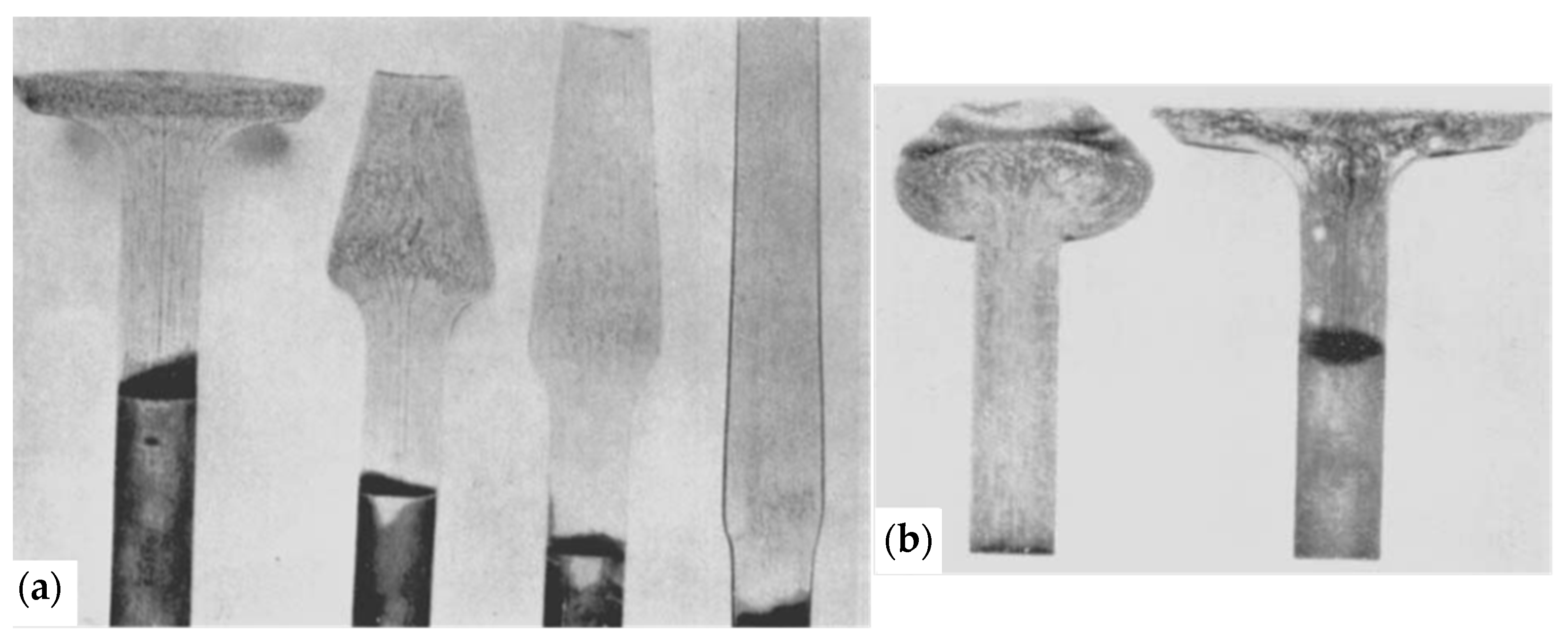

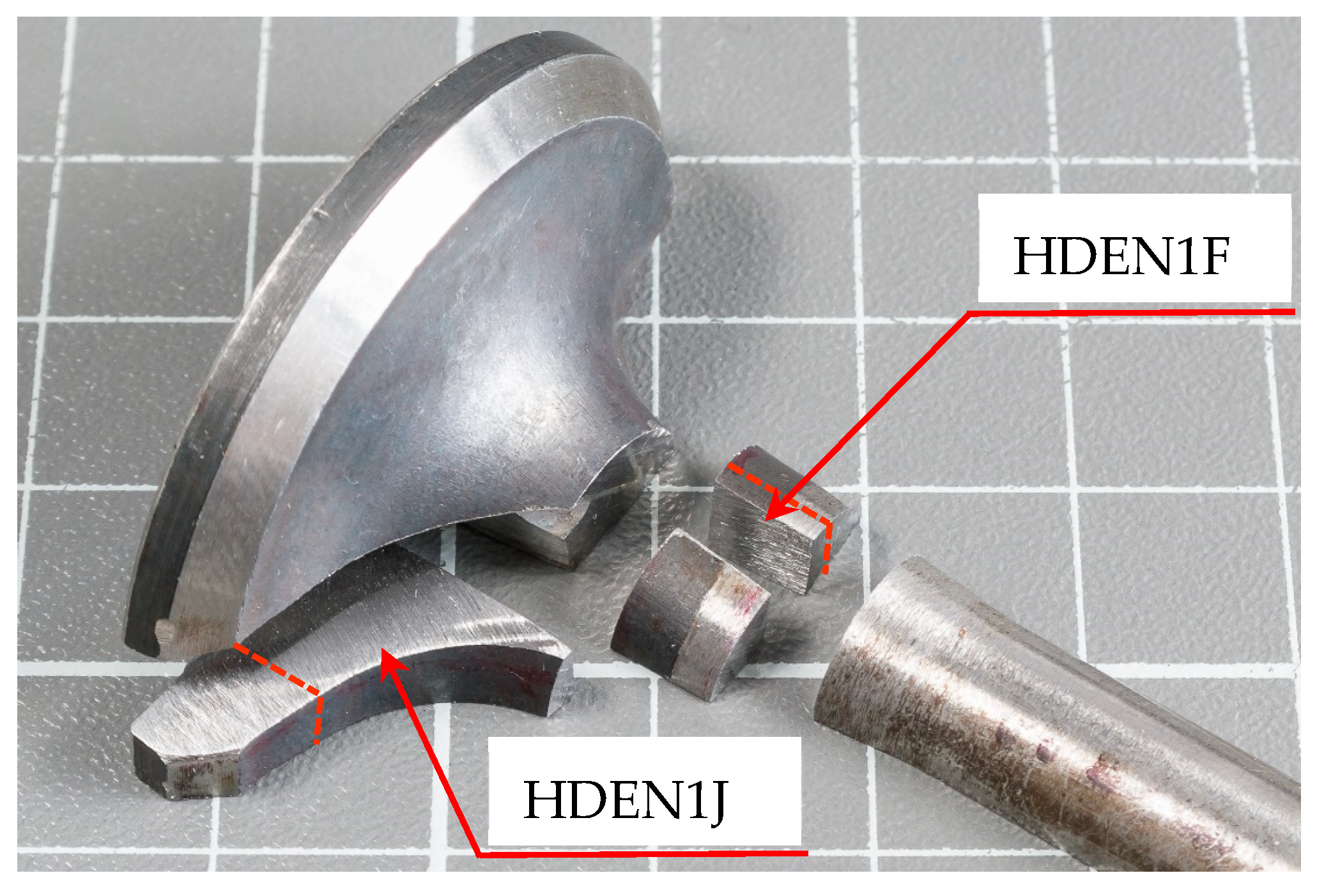




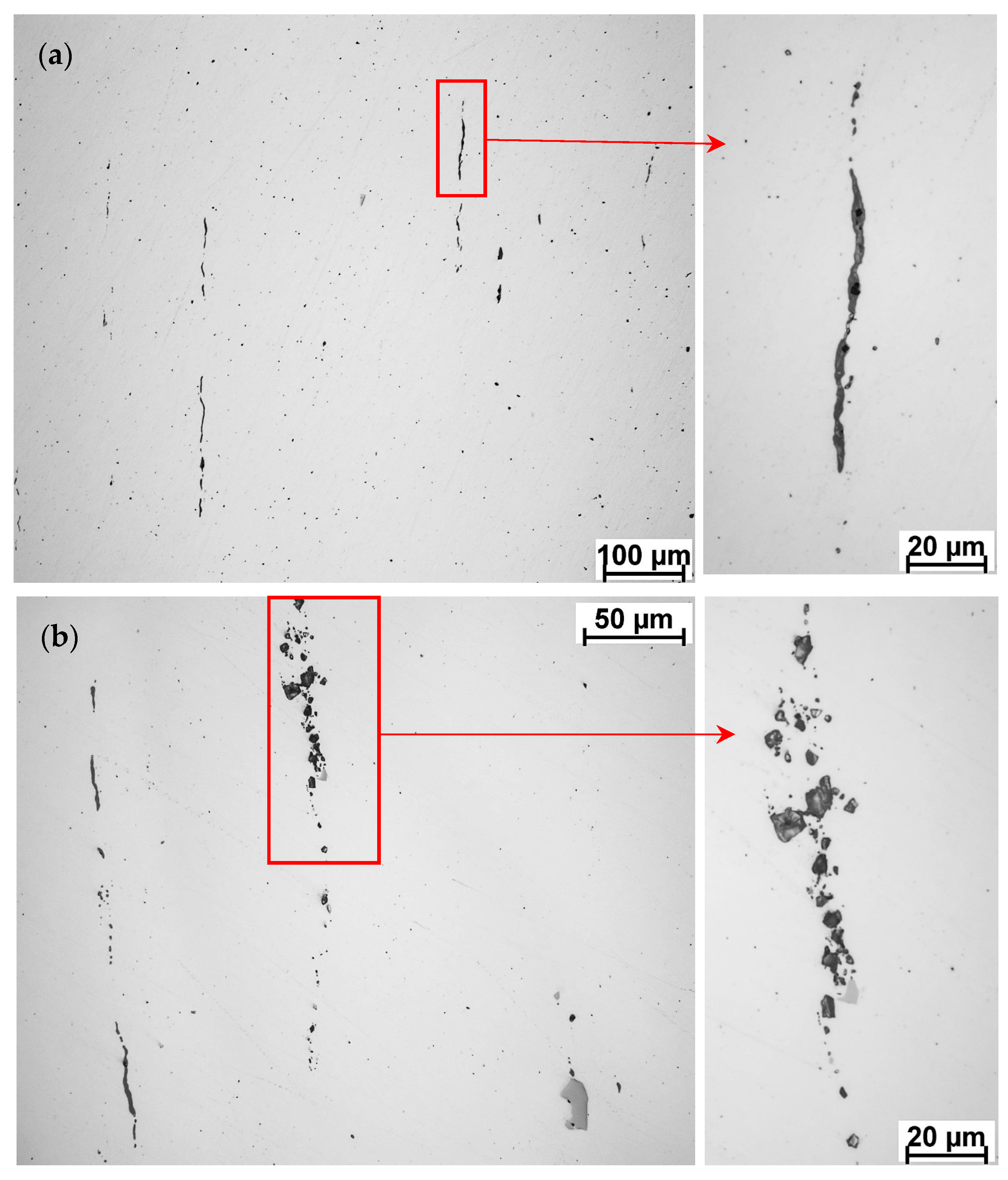
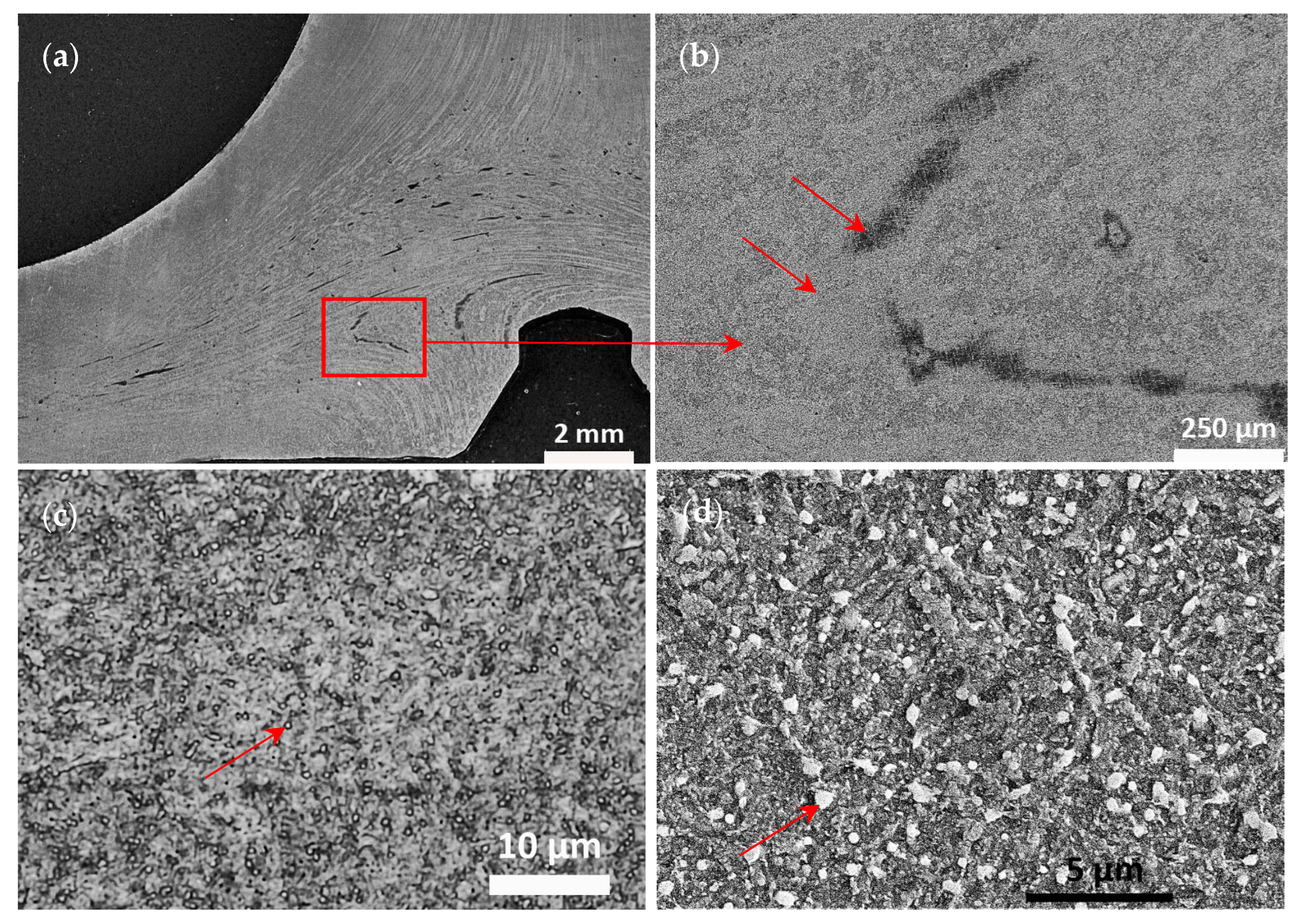
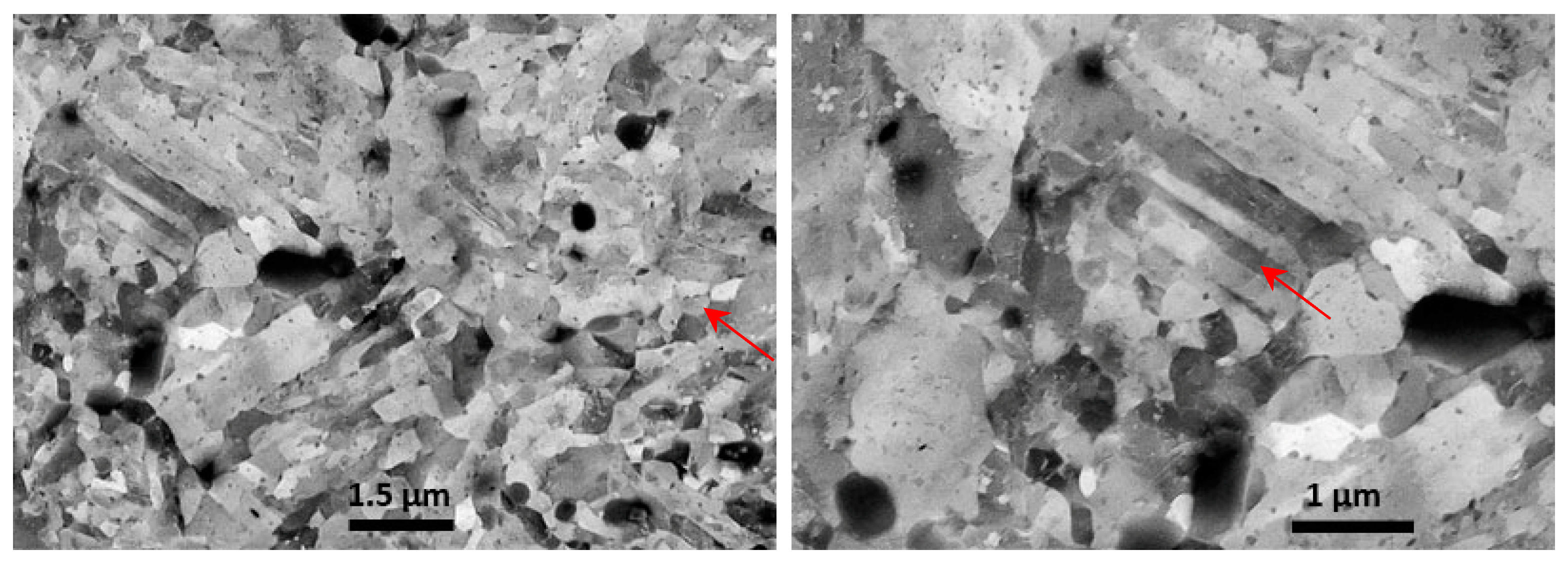

| Sample/Material | Chemical Composition (wt%) | ||||||||||
|---|---|---|---|---|---|---|---|---|---|---|---|
| C | Si | Mn | P | S | Cr | Ni | Mo | Al | Mg | Fe | |
| HDEN1F | 0.455 | 3.19 | 0.51 | 0.06 | 0.05 | 9.08 | 0.45 | 0.30 | 0.07 | 0.10 | Bal. |
| Banks [23], 1938 Silchrome 1 Standard | 0.40–0.50 | 3.50–4.25 | 0.40–0.60 | max 0.04 | max 0.03 | 7.50–8.50 | 0.50 | - | - | - | Bal. |
| Yamanaka et al. [18], 1942 Silchrome sample A | 0.40 | 3.50 | 0.45 | 0.017 | 0.010 | 12.40 | - | - | - | - | Bal. |
| Yamanaka et al. [18], 1942 Silchrome sample B | 0.36 | 3.04 | 0.43 | 0.022 | 0.007 | 11.57 | - | - | - | - | Bal. |
| Nishigori [17], 1934 Silchrome charge 20254 | 0.406 | 2.81 | 0.39 | 0.017 | 0.003 | 12.89 | - | 0.90 | - | - | Bal. |
| Nishigori [17], 1934 Silchrome charge 41356 | 0.451 | 2.49 | 0.30 | 0.020 | 0.006 | 12.68 | - | 1.00 | - | - | Bal. |
| Kuge [16], 1942 Silchrome Styria sample | 0.340 | 2.48 | - | - | - | 10.18 | - | 0.73 | - | - | Bal. |
| Nishigori [17], 1934 Silchrome Standard | 0.30–0.45 | 2.00–3.30 | max 0.60 | max 0.030 | max 0.030 | 9.00–13.00 | - | 0.70–1.3 | - | - | Bal. |
| 4Kx9C2 Standard | 0.35–0.45 | 2–3 | max 0.8 | max 0.03 | max 0.025 | 8–10 | max 0.6 | max 0.3 | - | - | Bal. |
| 40Kx10C2M Standard | 0.35–0.45 | 1.9–2.6 | max 0.8 | max 0.03 | max 0.025 | 9–10.5 | max 0.6 | 0.7–0.9 | - | - | Bal. |
| Wu et al. [20], 2015 Commercial X45CrSi9-3 | 0.41 | 2.24 | 0.28 | - | - | 9.25 | 0.08 | - | - | - | Bal. |
| X45CrSi9-3 Standard [9,25] | 0.40–0.50 | 2.70–3.30 | max 0.60 | max 0.040 | max 0.030 | 8.00–10.00 | max 0.50 | - | - | - | Bal. |
| HDEN1 | Tip | Stem | |||||||||||||||
|---|---|---|---|---|---|---|---|---|---|---|---|---|---|---|---|---|---|
| Measurement No. | 1 | 2 | 3 | 4 | 5 | 6 | 7 | 8 | 9 | 10 | 11 | 12 | 13 | 14 | |||
| Mitutoyo AVK C1 HV1 | 371 | 372 | 377 | 383 | 371 | 369 | 382 | 389 | 379 | 391 | 391 | 388 | 391 | 387 | |||
| Stem | Fillet | Disc | Avg. | ||||||||||||||
| 15 | 16 | 17 | 18 | 19 | 20 | 21 | 22 | 23 | 24 | 25 | 26 | 27 | 28 | 29 | 30 | 31 | - |
| 387 | 391 | 385 | 393 | 391 | 396 | 396 | 393 | 397 | 389 | 390 | 384 | 373 | 382 | 388 | 377 | 381 | 385±16 |
| Hardness Tester | Sample | Heat Treatment | Polish | HV1 | |||||
|---|---|---|---|---|---|---|---|---|---|
| 1 | 2 | 3 | 4 | 5 | Average | ||||
| Mitutoyo. | HDEN1S01 | Original | 1 µm | 391 | 391 | 393 | 394 | 396 | 393 ± 3 |
| Future-T. | 401 | 406 | 405 | 404 | 403 | 404 ± 3 | |||
| Mitutoyo AVK C1 | 402 | 451 | 403 | 402 | 399 | 411 ± 40 | |||
| HDEN1S06 | Original | 1 µm | 381 | 374 | 384 | 388 | 380 | 381 ± 7 | |
| 383 | 380 | 389 | 385 | 387 | 385 ± 5 | ||||
| 387 | 389 | 384 | 387 | 381 | 386 ± 5 | ||||
| HDEN1S11 | Original | 3 µm | 406 | 385 | 390 | 392 | 398 | 394 ± 12 | |
| 404 | 397 | 443 | 404 | 413 | 412 ± 31 | ||||
| 390 | 394 | 390 | 397 | 395 | 393 ± 3 | ||||
| - | 396 ± 17 | ||||||||
| Hardness Tester | Sample (1 µm Polish) | Heat Treatment (°C) | HV1 | ||||||
|---|---|---|---|---|---|---|---|---|---|
| Quenching | Tempering | 1 | 2 | 3 | 4 | 5 | Average | ||
| Future-Tech FM700 | HDEN1S02 | 1000 | - | 742 | 747 | 764 | 743 | 744 | 748 ± 16 |
| HDEN1S03 | 720 | 333 | 334 | 333 | 331 | 331 | 332 ± 2 | ||
| HDEN1S04 | 770 | 304 | 311 | 303 | 300 | 303 | 304 ± 6 | ||
| HDEN1S05 | 820 | 296 | 298 | 299 | 296 | 301 | 298 ± 3 | ||
| HDEN1S07 | 1025 | - | 773 | 771 | 769 | 761 | 766 | 768 ± 7 | |
| HDEN1S08 | 720 | 335 | 338 | 343 | 335 | 336 | 337 ± 6 | ||
| HDEN1S09 | 770 | 308 | 312 | 313 | 311 | 306 | 310 ± 4 | ||
| HDEN1S10 | 820 | 297 | 292 | 290 | 289 | 293 | 292 ± 4 | ||
| HDEN1S12 | 1050 | - | 718 | 659 | 666 | 770 | 785 | 719 ± 66 | |
| HDEN1S13 | 720 | 336 | 339 | 342 | 342 | 347 | 341 ± 6 | ||
| HDEN1S14 | 770 | 313 | 306 | 311 | 310 | 306 | 309 ± 4 | ||
| HDEN1S15 | 820 | 293 | 294 | 291 | 289 | 289 | 291 ± 3 | ||
Disclaimer/Publisher’s Note: The statements, opinions and data contained in all publications are solely those of the individual author(s) and contributor(s) and not of MDPI and/or the editor(s). MDPI and/or the editor(s) disclaim responsibility for any injury to people or property resulting from any ideas, methods, instructions or products referred to in the content. |
© 2024 by the authors. Licensee MDPI, Basel, Switzerland. This article is an open access article distributed under the terms and conditions of the Creative Commons Attribution (CC BY) license (https://creativecommons.org/licenses/by/4.0/).
Share and Cite
Růžička, J.; Alıcıoğlu, A.; Bouquerel, J.; Novák, P.; Vogt, J.-B. Assessment of Microstructural Features of a Silchrome 1 Exhaust Valve of a Harley-Davidson WLA World War II Motorcycle. Materials 2024, 17, 4156. https://doi.org/10.3390/ma17164156
Růžička J, Alıcıoğlu A, Bouquerel J, Novák P, Vogt J-B. Assessment of Microstructural Features of a Silchrome 1 Exhaust Valve of a Harley-Davidson WLA World War II Motorcycle. Materials. 2024; 17(16):4156. https://doi.org/10.3390/ma17164156
Chicago/Turabian StyleRůžička, Jan, Ali Alıcıoğlu, Jérémie Bouquerel, Pavel Novák, and Jean-Bernard Vogt. 2024. "Assessment of Microstructural Features of a Silchrome 1 Exhaust Valve of a Harley-Davidson WLA World War II Motorcycle" Materials 17, no. 16: 4156. https://doi.org/10.3390/ma17164156
APA StyleRůžička, J., Alıcıoğlu, A., Bouquerel, J., Novák, P., & Vogt, J.-B. (2024). Assessment of Microstructural Features of a Silchrome 1 Exhaust Valve of a Harley-Davidson WLA World War II Motorcycle. Materials, 17(16), 4156. https://doi.org/10.3390/ma17164156






